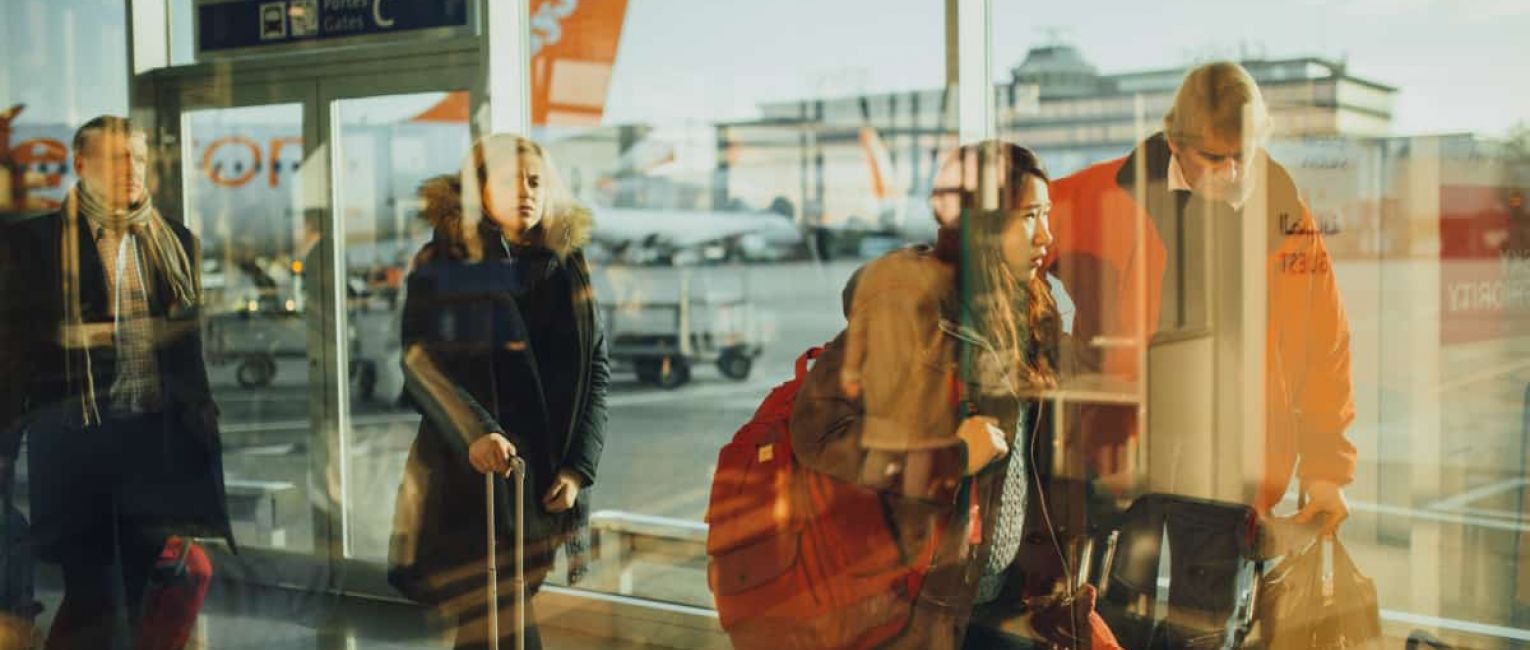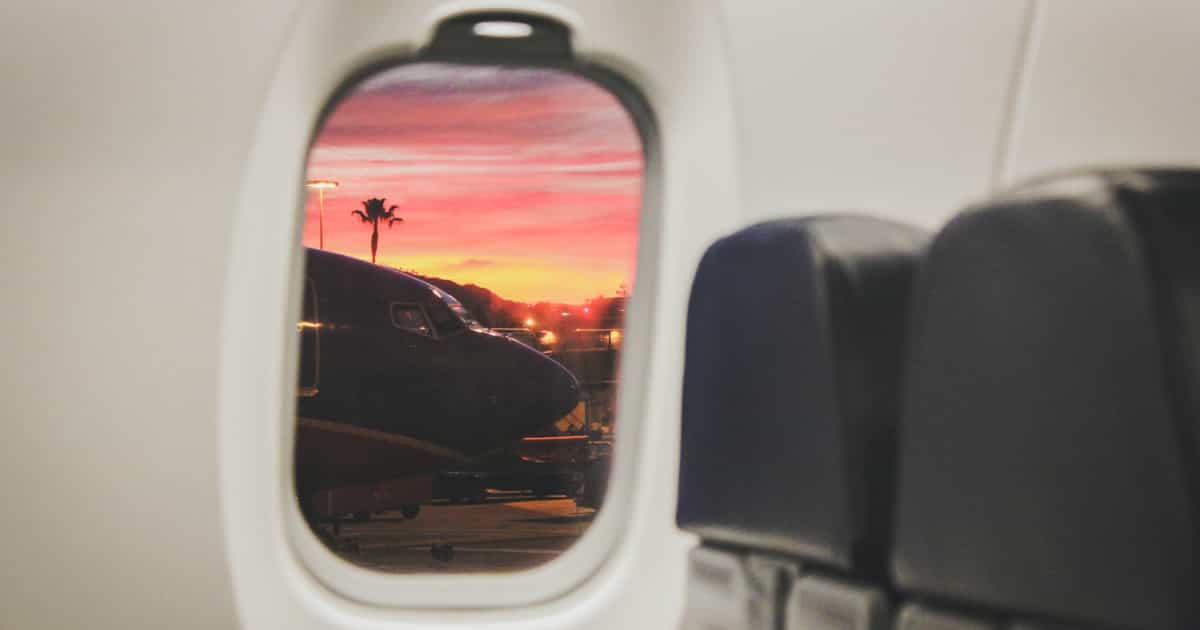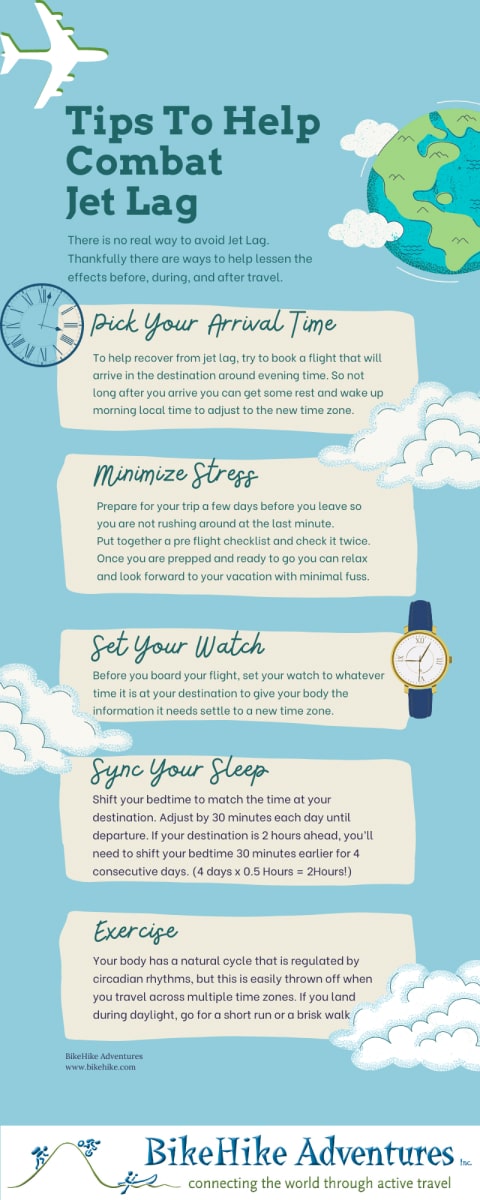
Tips for Combatting Jet lag
So you're packed and ready to head off on an exciting new adventure, but you are heading to a different time zone and have heard all the warnings about jet lag. So you start to think “how do you avoid this from happening?”
Well, truthfully there is no real way to avoid it. Thankfully, there are ways to lessen the effects and get you back to feeling your best.
What Is Jet Lag And How Is It Caused?
The medical term for this is “Desyncronisation”. This means your circadian rhythm (Your Body Clock) is out of sync.
When traveling, our bodies can feel out of sync with the local time zone. It's a weird feeling of fatigue and disorientation, which can make everyone who experiences it feel rather worn out and can really take the enjoyment out of traveling.
A significant number of people find themselves with jet lag when traveling across multiple time zones. Many of us already find it difficult sleeping in new beds and strange cities, so we want to try to avoid the effects of jet lag as much as possible.

Jet Lag Effects
Jet lag can lead to a range of potential problems, combined with the tiredness we already associate with it you may also encounter:
Insomnia: Unable to sleep at night and feeling drowsy all day. This is your body clock telling you it is still in your old time zone.
Digestive Issues: Unable to eat, stomach aches and feeling nauseous, other effects like constipation.
Physical Issues: Lack of energy and feeling physically drained.
Memory loss: The ability to recall recent moments. As traveling is about creating memories we want to avoid this as much as possible!
Emotional Issues: Unable to manage our emotions and mild anxiety.
Factors That Make Jet Lag Worse
There are also other factors you should be aware of that can potentially make your jet lag worse depending on where you are traveling.
Traveling eastward: Going to bed earlier is harder for our bodies to adapt to than going to bed later. So this affects US and Canadian travelers heading to Europe a little more than Europeans heading to North America.
Multiple Timezones: The more time zones you hit you worse you are likely to feel. The general rule is 1 timezone – 1 day of recovery. This is not really feasible for many travelers but it’s important to be aware the more zones you go through the worse your jet lag will be.
Age: Sleep patterns are a little more fragile in younger kids and older adults. So be wary when traveling with young kids or someone much older that their experience will likely be worse.
How To Combat Jet Lag
There are plenty of old-wives tales on how to beat jet lag. And everyone has their own tips and tricks they swear by. With over 20 years of travel experience under our belts, we can hope to get your trip started on the right footing and arrive ready for an adventure.
Before Travel
Pick Your Arrival Time:
To help recover from jet lag, many travelers try to book a flight that will arrive in the destination around evening time. So not long after they arrive they can get some rest and wake up morning local time to adjust to the new time zone.
Minimize Stress:
Prepare for your trip a few days before you leave so you are not rushing around at the last minute. This will help relive pre travel stress.
Put together a pre flight checklist and check it twice. Once you are certain you are prepped and ready to go you can relax and look forward to your vacation with minimal fuss.
Get Quality Sleep:
Focus on getting quality sleep on the nights before your departure. This will help you overcome any issues feeling sluggish or sleep deprived the day you plan on leaving. The above tip of planning early will also help you relax before your flight, especially the night before which is crucial.
Light Exposure Before Travel:
As we already mentioned, our circadian rhythm(Body-Clock) is heavily influenced by exposure to light. So, strategic light exposure may help adjust your body clock to reduce jet lag before arriving at your destination.
Traveling eastwards you will want to get as much sunlight as possible from sunrise to early morning. This strategic light exposure will help you sync with local time.
The opposite is true traveling westwards – you will want to delay light exposure until late afternoon.
The best way to minimize light exposure is by shielding windows and wearing sunglasses even indoors (yes it looks silly – but it makes for an interesting story)
Sync Your Sleep:
Depending on how far you have to travel this may not be feasible. But, you can try to shift your bedtime until it matches (or as close as possible) the new time at your destination. Do this by moving bedtime by 30 minutes each day until departure. So, if the time at your destinations timezone is 2 hours ahead, you’ll need to shift your bedtime 30 minutes earlier for 4 consecutive days. (4 days x 0.5 Hours = 2Hours!)
Set Your Watch To Local Time:
Before you board your flight, set your watch to whatever time it is at your destination to give your body the information it needs to begin settling to a new time zone.
During flight
Eat Light:
Opt for a lighter snack and something along the lines of fruit and vegetables rather than a heavy meal or sugary snacks. If you are planning a nap to sync your sleep pattern, digestion problems or dehydration from salty snacks will effect your ability to sleep.
Stay Hydrated:
The effects of dry cabin air and a stuffy environment can make you dehydrated. Even more so on a long haul flight. So it’s important to drink plenty of water before your flight and during it.
Minimize Alcohol and Caffeine:
For the same reason to keep hydrated, it is also important to avoid alcohol and caffeine as they can make you feel significantly worse. Alcohol will dehydrate while caffeine may throw that sleeping balance you’ve worked so hard on out of whack. Stick with the water and Decaf in-flight.
Bring Sleeping Aides:
Generally you want to try sleep at times that mimic the timezone at your destination. If your flight leaves at 8pm and it’s 3am at your arrival point then you want to get some sleep as soon as possible. Travel pillows, ear plugs, eye shields can help you block out your surroundings.
Move A Little:
Not so much to help with jet lag, but when you are on a long haul flight it can help to get up and walk around a little to help reduce the risk of blood clots.
On Arrival
Exercise
Shawn Youngstedt, at the College of Nursing and Health Innovation and the College of Health Solutions at Arizona State University in Phoenix, has put together research that shows exercise can help alleviate jet lag.
Your body has a natural cycle that is regulated by circadian rhythms, but this is easily thrown off when you travel across multiple time zones.
Our bodies are tricked into thinking its daytime when it’s really night-time and vice-versa. This see-saw effect triggers jet lag as your body struggles between its internal and external timing cues.
If you land during daylight, go for a short run or a brisk walk. The natural light also helps your body adjust to the new area.
Avoid A Nap:
Whatever the case, we are always burned out after traveling. The airport hustle and bustle, and long flight with broken sleep, the temptation to hit your pillow as soon as you check in is unavoidable. But if you are trying to adjust to a new time zone, avoid sleeping until late evening so that you give yourself time to adjust correctly. Maybe it’s time to treat yourself to that coffee you avoided on the flight.

Hopefully, with these tips you can relieve your jet lag and have the trip you deserve. Are there any tips that help you when you travel? Be sure to let us know!
Happy Travels,
Trish Sare.
About The Author
 Trish Sare is the owner of BikeHike and a passionate outdoor enthusiast with over 30 years of experience as a world traveler. She's lived, traveled, and guided extensively in North, South and Central America, Europe, Oceania, Africa, and Asia. She has guided and helped to develop every one of our multi-sport holidays. In her spare time, Trish is usually outdoors either mountain biking, hiking, sea kayaking, trail running, or climbing. Trish has a passion for the world and all of the amazing cultures that inhabit it and does her best to immerse herself directly into their distinctive lifestyles.
Trish Sare is the owner of BikeHike and a passionate outdoor enthusiast with over 30 years of experience as a world traveler. She's lived, traveled, and guided extensively in North, South and Central America, Europe, Oceania, Africa, and Asia. She has guided and helped to develop every one of our multi-sport holidays. In her spare time, Trish is usually outdoors either mountain biking, hiking, sea kayaking, trail running, or climbing. Trish has a passion for the world and all of the amazing cultures that inhabit it and does her best to immerse herself directly into their distinctive lifestyles.